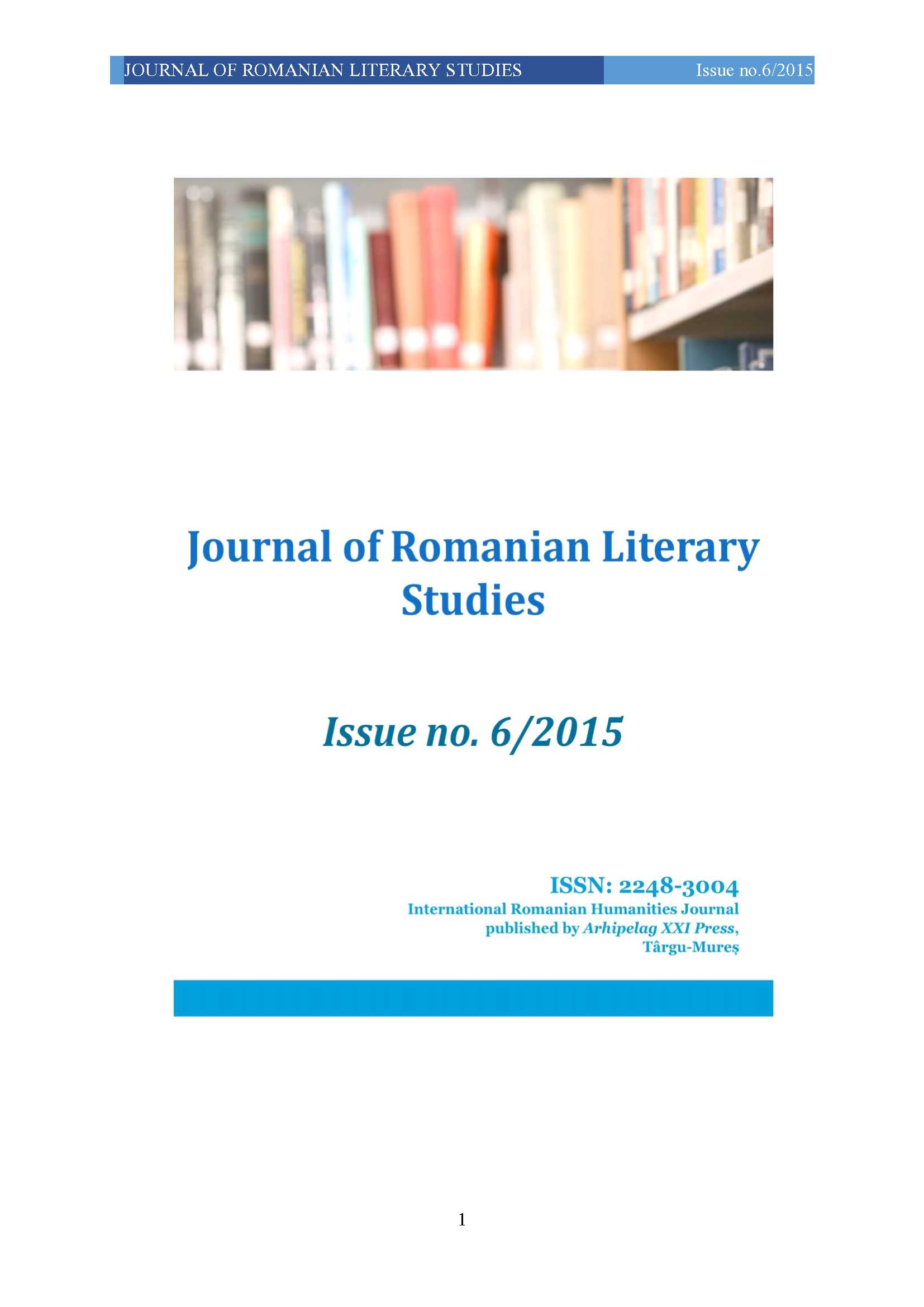(INTER)DISCIPLINARY FRONTEERS AND METHODOLOGIC ALTERNATIVES IN COMPARED LITERATURE: INTERCULTURALITY AND “INTERSEMIOTIC” TRANSPOSITION
(INTER)DISCIPLINARY FRONTEERS AND METHODOLOGIC ALTERNATIVES IN COMPARED LITERATURE: INTERCULTURALITY AND “INTERSEMIOTIC” TRANSPOSITION
Author(s): Nicoleta Popa BlanariuSubject(s): Language and Literature Studies, Literary Texts
Published by: Editura Arhipelag XXI
Keywords: comparative literature; invariant; literary constant; intermedial; interdisciplinary; dependence; influence; translation; intersemiotic transposition
Summary/Abstract: The evolution of comparative literature has been revealing, for more than a century, a sinuous process of self-definition: as of the beginning of the 20th century, it has been emerging like a diverse set of research, with studies covering "international literary relations", from a historical perspective in line with the established tradition of founders and eventually building a comparative poetics, whose necessity and legitimacy are nowadays acknowledged. As far as its specific field is a "tertium comparationis, that does not belong to any of the studied texts" – or, we may add, to none of the domains to which it is associated in an interdisciplinary way – but "maintains relations with each of these", general and comparative literature is being mistaken for a "methodological utopia" (Pageaux 2000: 35). This (also) involves a relatively unrestrictive delimitation of the object and working methods (Wellek 1965: 282-295; Étiemble 1963), with all the positive connotations or the opposite ones associated with this state of fact. At the "crossroads of certain sets", each with its particularities, comparative literature beneficially feeds on these very "interferences", "meetings, exchanges" (Pageaux 2000: 34 – 35) between literatures and between domains of study. However, its very flexibility – available for constant assimilation and adaptation – determines the problem of a rigorous comparatist "methodology", founded on a coherent theory (Greimas & Courtès 1979: 49), to remain yet unsolved. The contributions of Étiemble (1958; 1963), Munteano (1967) or Marino (1988; 1998), among others, built around the concepts of "invariant" and literary "constant" have thus shaped, as of the middle of the 20th century, a completely up-to-date research programme – yet unfinished – able to associate literary and intercultural studies, comparative literature and (inter)cultural anthropology. Resurfacing, at about the same time, the "intersemiotic" relations between literature and arts, Jakobson (1963) foreshadowed, in turn, today’s multi- and intermedial studies, even the latter’s crossing with the wide domain of comparative literature, as it is now globally understood: like an eminently interdisciplinary and – how else if not – intercultural domain.
Journal: Journal of Romanian Literary Studies
- Issue Year: 2015
- Issue No: 06
- Page Range: 581-595
- Page Count: 15
- Language: Romanian

